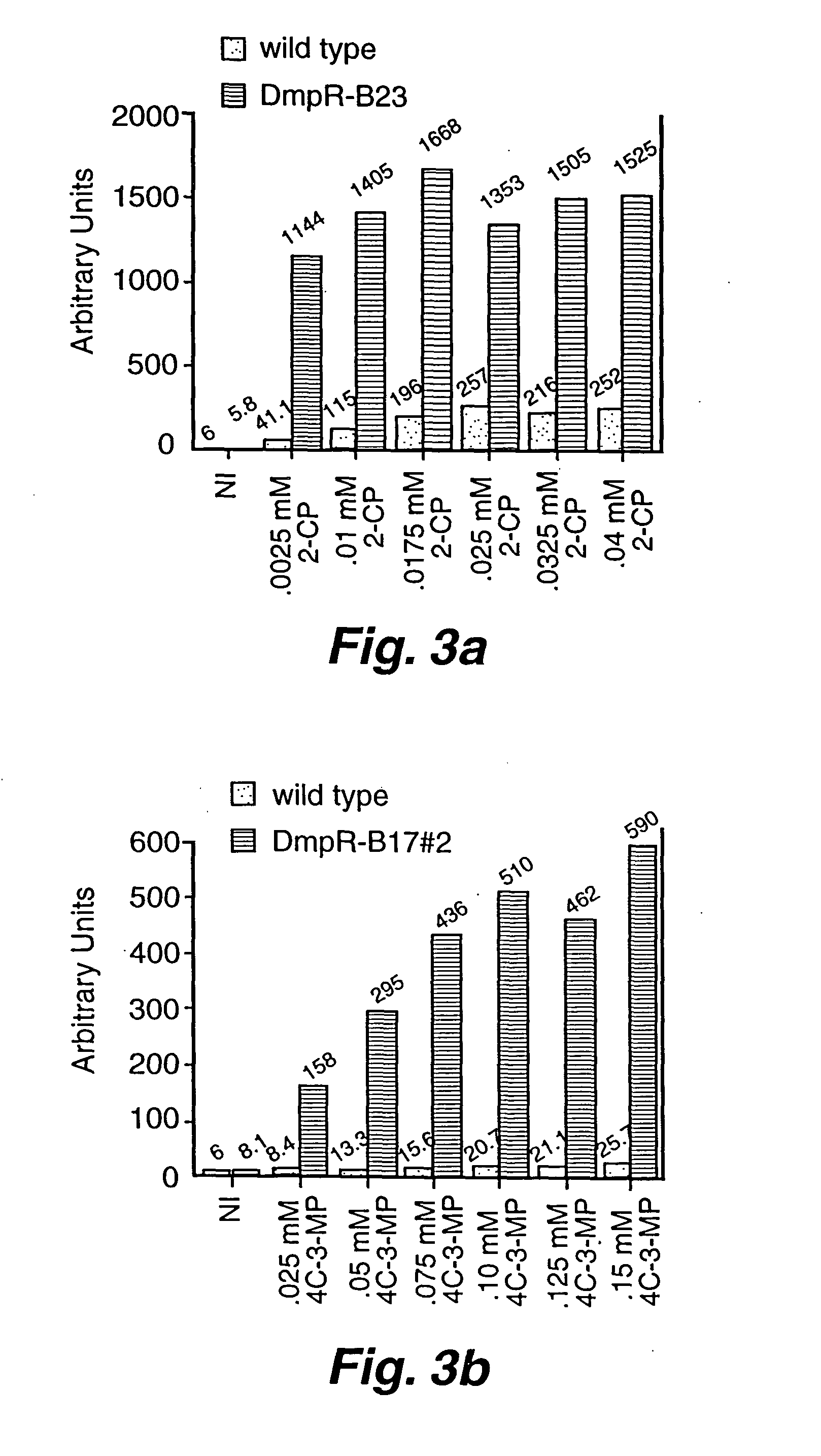Detection of phenols using engineered bacteria
a technology of engineered bacteria and phenol, which is applied in the field of detection of organic pollutants, can solve the problems of limited bacterial biosensor construction, and limited chromatographic methods currently in use, so as to enhance the bacterial response to organic molecules and enhance the response to organic molecules
- Summary
- Abstract
- Description
- Claims
- Application Information
AI Technical Summary
Benefits of technology
Problems solved by technology
Method used
Image
Examples
example
[0030] A. Bacterial strains and plasmids. E. coli TE2680 (Elliot, T. 1992. “A method for constructing single-copy lac fusions in Salmonella typhimurium and its application to the hemA-prfA operon,” J. Bacteriol. 174:245-253) was used as an intermediate strain for placing the Pdmp-lacZ fusion into the chromosome of E. coli MC4100 (Casadaban, M. 1976. “Transposition and fusion of the lac genes to selected promoters in Escherichia coli using bacteriophage, lambda and Mu,” J. Mol. Biol. 104:541-555) to create the dmpR test strain AW101. DH5a (Sambrook, J. E. F. Fritsch, and T. Maniatis. 1989. Molecular Cloning: A Laboratory Manual, 2nd Edition. Cold Springs Harbor Laboratory Press. Plainview, N.Y.) was host for plasmid constructions.
[0031] pVI401 (See, e.g., Shingler and Moore, supra) served as the source of both the dmpR wt-N gene and the Pdmp promoter which heads the divergently transcribed dmp operon. dmpR wt-N contains a synthetic NdeI restriction site resulting from nucleotide cha...
PUM
 Login to View More
Login to View More Abstract
Description
Claims
Application Information
 Login to View More
Login to View More - R&D
- Intellectual Property
- Life Sciences
- Materials
- Tech Scout
- Unparalleled Data Quality
- Higher Quality Content
- 60% Fewer Hallucinations
Browse by: Latest US Patents, China's latest patents, Technical Efficacy Thesaurus, Application Domain, Technology Topic, Popular Technical Reports.
© 2025 PatSnap. All rights reserved.Legal|Privacy policy|Modern Slavery Act Transparency Statement|Sitemap|About US| Contact US: help@patsnap.com



